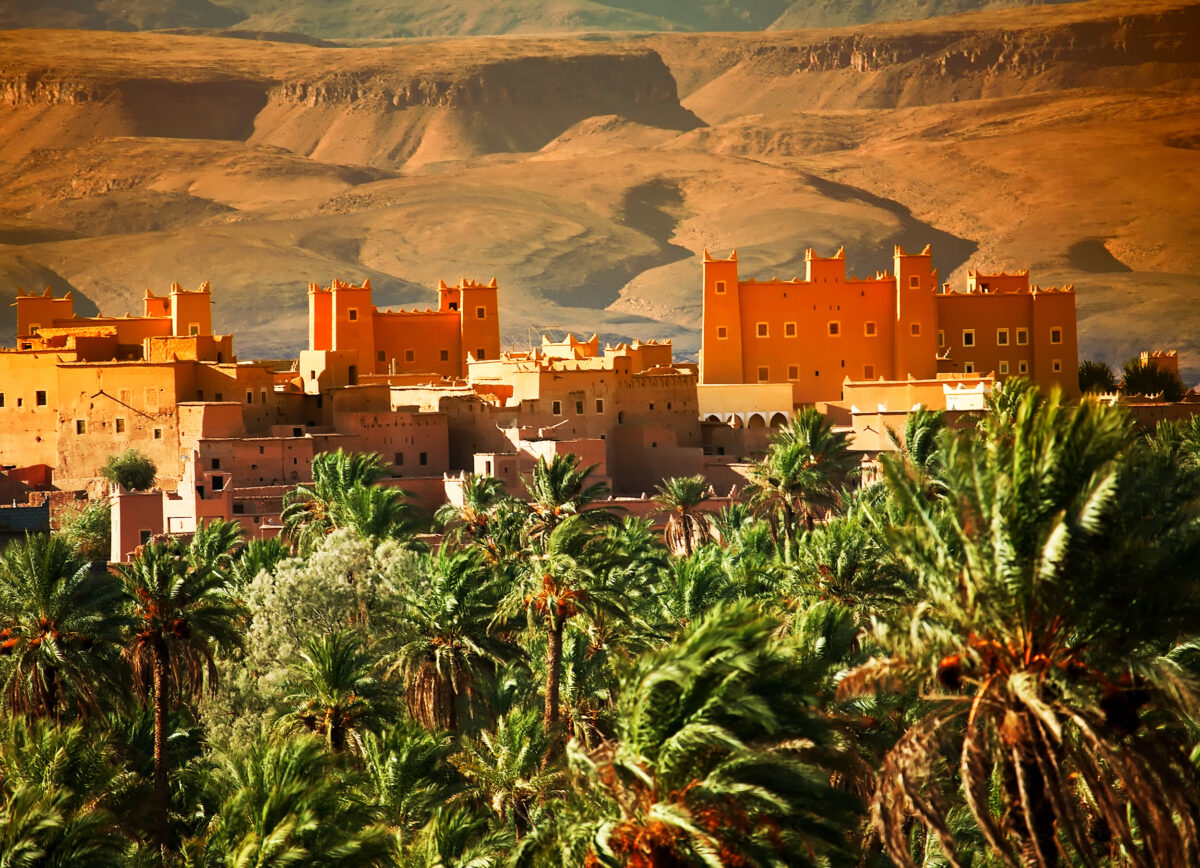
Morocco, located in North Africa, is a land of diverse landscapes, rich cultural heritage, and vibrant traditions. From the majestic peaks of the Atlas Mountains to the golden sands of the Sahara Desert and the bustling streets of its imperial cities, Morocco offers a tapestry of experiences that captivate travelers from around the world.
As a crossroads of civilizations, Morocco has been shaped by a blend of influences, including Berber, Arab, African, and European cultures. This fusion is evident in its architecture, cuisine, music, and art, creating a unique and enchanting atmosphere.
The country’s imperial cities, such as Rabat, Casablanca, Marrakech, and Fes, showcase its rich history and architectural splendor, with ancient medinas, ornate palaces, and bustling souks (markets) bustling with activity.
Beyond the cities, Morocco’s natural beauty is equally captivating. From the lush oases of the Draa Valley to the dramatic gorges of the Todra and Dades and the picturesque coastal towns along the Atlantic and Mediterranean shores, there’s no shortage of breathtaking scenery to explore.
Beyond the cities, Morocco’s natural beauty is equally captivating
Morocco’s cultural heritage is also celebrated through its vibrant festivals, traditional music, and colorful rituals, offering visitors a glimpse into its rich and diverse tapestry of traditions.
Whether you’re exploring the winding alleyways of Fes, trekking through the rugged landscapes of the High Atlas Mountains, or savoring the flavors of a tagine in a bustling market, Morocco promises an unforgettable journey filled with discovery, adventure, and hospitality.
Rabat
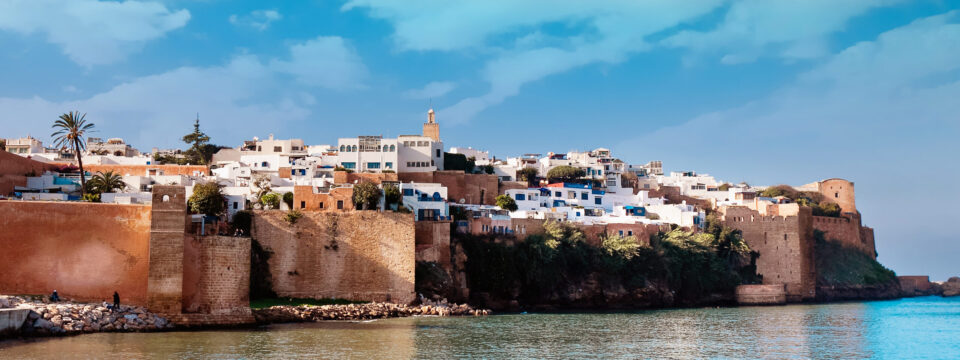
Rabat is one of the country’s four imperial cities, known for its rich history, cultural heritage, and administrative significance. It has a long history dating back to the 12th century when it was established as a fortified settlement by the Almohad dynasty. Over the centuries, it served as a strategic military and administrative center.
As the capital of Morocco, Rabat is the seat of government and the residence of the king. It houses important government institutions, including the Royal Palace, Parliament, and various ministries.
Rabat boasts numerous historical and cultural attractions, including the UNESCO World Heritage Site of the Kasbah of the Udayas (Kasbah des Oudaias), which features picturesque narrow streets, Andalusian gardens, and a medieval fortress overlooking the Atlantic Ocean. The city also has other notable landmarks, such as the Hassan Tower, the Mausoleum of Mohammed V, and the Chellah Necropolis.
Overall, Rabat is a dynamic and culturally rich city that showcases Morocco’s blend of tradition and modernity, making it a significant destination for tourists, diplomats, and residents alike.
Rabat boasts numerous historical and cultural attractions
Casablanca
Casablanca is the largest city in Morocco, situated on the Atlantic coast. It is a vibrant metropolis and serves as the country’s economic, industrial, and commercial hub.
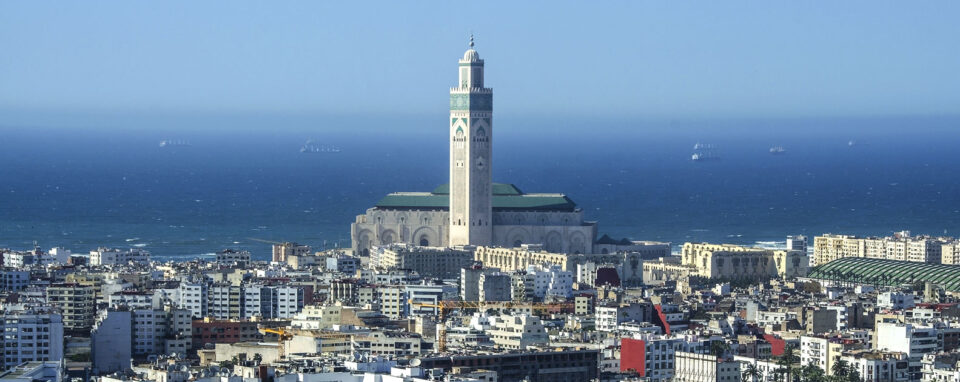
Casablanca is the economic heart of Morocco, contributing significantly to the country’s GDP. It houses the largest port in North Africa, which handles a substantial portion of the country’s international trade. The city also has numerous industries, including finance, textiles, manufacturing, and services.
The modern infrastructure of Casablanca, with skyscrapers, wide boulevards, and bustling neighborhoods, is just part of a mix of architectural styles, ranging from Art Deco buildings from the French colonial era to contemporary structures. As a cosmopolitan city, Casablanca is home to people from various cultural backgrounds, including Berber, Arab, European, and sub-Saharan African communities. This diversity is reflected in the city’s cuisine, arts, and cultural events. The city offers several notable landmarks and attractions. The Hassan II Mosque is one of the city’s most iconic sights, renowned for its stunning architecture and being one of the largest mosques in the world. Other attractions include the Corniche, a scenic waterfront promenade, the Old Medina (medieval quarter), and the bustling Central Market (Marché Central).
Casablanca gained international fame through the classic film “Casablanca” (1942), starring Humphrey Bogart and Ingrid Bergman. Although most of the movie was filmed in Hollywood studios, it helped popularize the image of Casablanca as a romantic and exotic destination.
The Villa des Arts showcases contemporary Moroccan art, while the Moroccan Jewish Museum provides insights into the country’s Jewish heritage.
Fes
One of Morocco’s oldest and most culturally rich cities, Fes, is renowned for its well-preserved medieval architecture and intricate labyrinthine streets, including the ancient walled city of Fes el-Bali, and Tangier is a strategic port city at the entrance to the Strait of Gibraltar known for its mix of cultures and picturesque coastline.
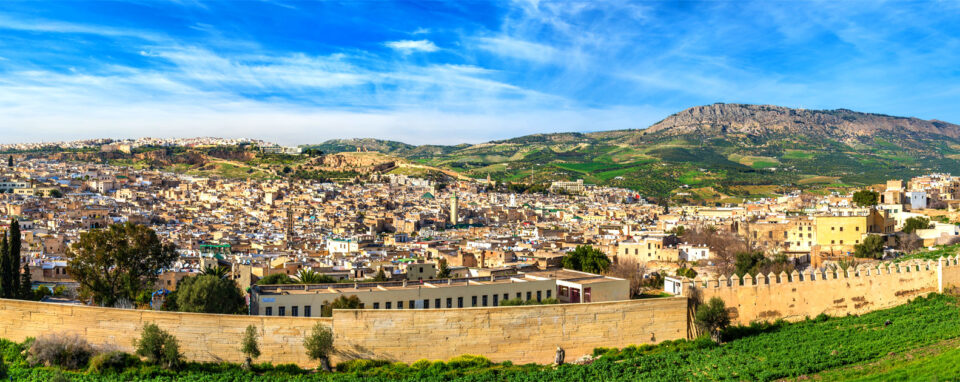
The heart of Fes is its ancient medina, a UNESCO World Heritage site, and one of the largest car-free urban areas in the world. Within its walls lie countless souks (markets), mosques, madrasas (religious schools), and traditional Moroccan homes.
City is famous for its traditional craftsmanship, including pottery, leatherwork, and textiles. Visitors can explore artisan workshops and witness artisans practicing age-old techniques passed down through generations.
Also, it is known as a city of festivals, including the Fes Festival of World Sacred Music, which attracts artists and musicians from around the globe to celebrate the spiritual and cultural heritage of humanity.
Historical Landmarks worth visiting are Al-Attarine Madrasa, Bou Inania Madrasa, and the Merenid Tombs, offering visitors insight into the city’s rich history and architectural marvels.
Fes offers visitors a journey back in time through its ancient streets, historical monuments, and vibrant cultural scene, making it a must-visit destination for those seeking an authentic Moroccan experience.
Tangier
Tangier is often called a “world city” due to its strategic location at the northern tip of Morocco, overlooking the Strait of Gibraltar. Its historical significance as a major gateway between Africa and Europe has contributed to its cosmopolitan atmosphere and diverse cultural influences. Tangier has long been a melting pot of cultures, attracting people from various backgrounds, including Berber, Arab, European, and African.
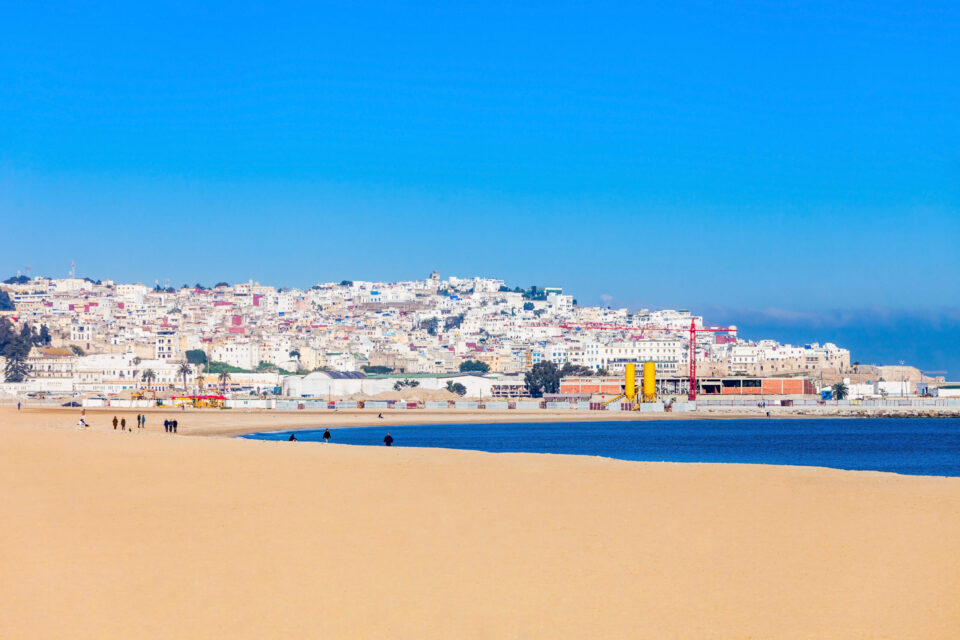
Throughout history, Tangier has been a key port city for trade and has served as a meeting point for different civilizations, resulting in a rich tapestry of traditions, languages, and cuisines. Additionally, Tangier has played a significant role in literature and the arts, attracting writers, artists, and intellectuals from around the world, drawn by its exotic allure and vibrant atmosphere.
Today, Tangier continues to be a dynamic hub of commerce, tourism, and cultural exchange, with modern infrastructure, bustling markets, and a thriving arts scene. Its status as a “world city” reflects its global connections and ability to embrace diversity while retaining its distinctive identity.
Tangier has played a significant role in literature and the arts
Other
Agadir is a popular beach resort destination on the Atlantic coast, known for its sandy beaches and modern amenities. Meknes is recognized for its rich history and well-preserved imperial architecture.
Essaouira is a charming coastal town known for its relaxed atmosphere, beaches, and strong winds, making it a popular spot for water sports.
Tetouan which is situated in the northern part of the country, is known for its Andalusian-influenced architecture and proximity to the Mediterranean Sea.
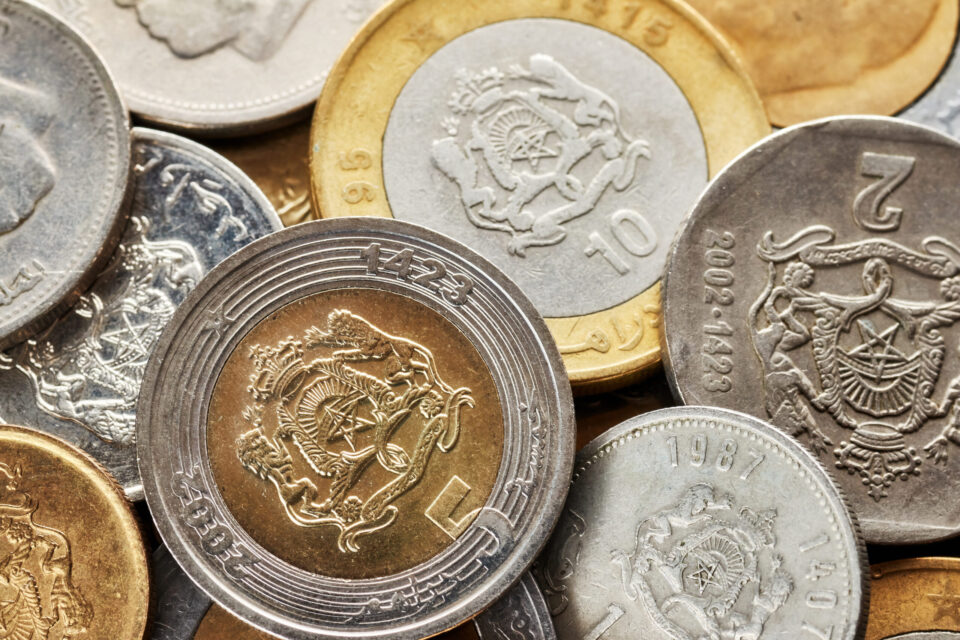
Visa
Citizens of the Republic of Serbia need a visa, except for holders of diplomatic and official passports of the Republic of Serbia. Visas can be obtained at the Embassy of the Kingdom of Morocco in Belgrade. To enter Morocco, it is necessary to have a valid passport and а visa.
Money
The currency of Morocco is the Moroccan Dirham, abbreviated as MAD. When traveling to Morocco, it’s advisable to exchange currency at official exchange offices, banks, or ATMs. Major credit cards such as Visa and Mastercard are widely accepted in hotels, restaurants, and larger establishments. Still, it’s recommended to carry cash, especially when visiting more remote areas or local markets where card acceptance may be limited.